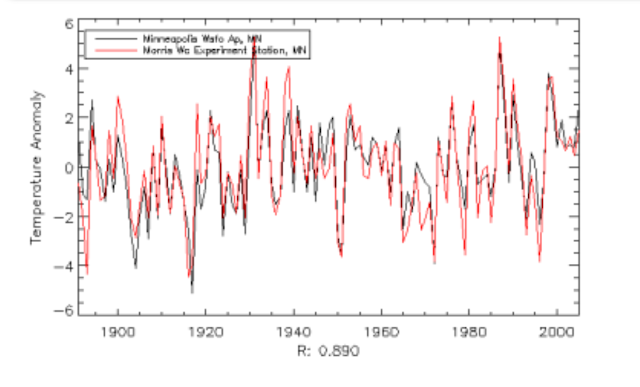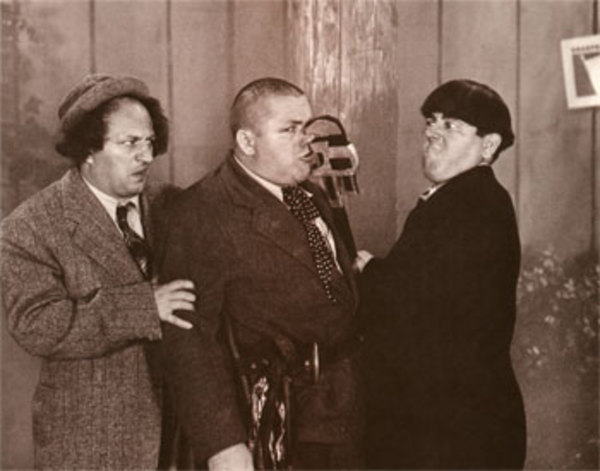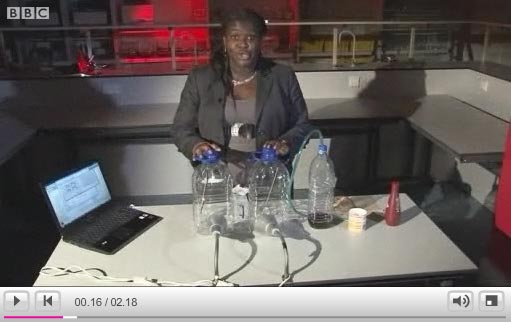A Post Without Name
Received from Rabett Run's special Onion correspondent. Read at your own risk
NEW YORK—In a statement posted this morning on several Warmist websites ( here, here, here, and here) comprising the Global Warming Network, IPCC, claimed responsibility for last Thursday's devastating personal attack on Northern California resident Anthony Watts.
The highly coordinated strike, targeted the unsuspecting TV weatherman as he exited a meeting where he had received further marching orders from Roger Pielke Sr. and made light of Watt's failure to execute a useful experimental design for the Surface Station Project, related to his complete lack of training and meaningful qualifications, and inability to meet single women, occurred at 9:32 AM. At 9:35 AM, a second wave of vicious insults was reportedly launched at Watts, obliterating what little remained of his self-esteem.
"The foot soldiers of IPCC have struck at this pathetic slob of a man with righteous force, and they have brought him down," read the statement from the James Hansen Kombat Brigade hiding in the wastelands of northern Manhattan. All praise to Claude N. Williams, Jr., and Michael A. Palecki from the NOAA/National Climatic Data CenterNational Climate Data Center, who carried out the personal attack. "There is nothing left of him now. Anthony Watts has been destroyed."
"Praise be to Rajandra K. Pachauri," the statement continued. "Rajandra K. Pachauri is great."
Not the IPCC (NIPCC) officials and funders from the Heatland Institute and the Competitive Enterprise institute told reporters that it could take months to determine the full extent of the damage from what they are calling the worst ever ad hominem strike on a climate denialist blog, even as mop up crews from pielkeclimatesci and Watts Up With That worked the Internet around the clock to salvage whatever bits of Watt's' self-respect they could from the wreckage.
"Never before has our nation witnessed such brutal mockery," NIPCC Director S. Fred Singer said. "It appears that the IPCC had been monitoring Mr. Watts long enough to become fully conversant in his insecurities, and was prepared to employ any means necessary, even pointing out his huge, Neanderthal-like statistical ignorance, to achieve its terrible goal. Indeed, there wasn't a single emotional sore spot—from his lack of scientific training to the fact that most scientists don't seem to like him—that they did not exploit. "
"It's unthinkable," Singer added. "They even reminded Tony about the time nobody showed up to his NIPCC talk for whom we had not paid the admission fee. Indeed, even there, some of the street people were extremely disrespectful even though we fed them well."
When asked by reporters why the NIPCC had failed to prevent the hurtful attack, Singer said it was impossible for the NIPCC to secure every potential target in a denialosphere so densely populated with losers. Substantial resources had already been expended defending the hopeless Ian Plimer and the emergency squads were out dealing with Rosegate when the attack on Watts began. Other resources were engaged in an attack on the great enemy Pachauri coordinated by Roger Pielke Jr. who had made his Roladex available to the NIPCC in a major campaign.
"At this time, we simply don't have the resources necessary for such an undertaking," Singer said. "As much as we would like to, we cannot guarantee the safety of every TV weather presenter who sleeps on a futon and still has not graduated from
Critics, however, pointed to the fact that the IPCC allied blogistas had attempted a similar personal attack on Watts in 2009, one that might have succeeded had it not been for an uncharacteristic intelligence-gathering error on the warmists part when we were able to temporarily trick
"We know that the IPCC will keep returning to a target until they get their desired result," CEI director Myron Ebell said. "Seven months ago, for whatever reason, they failed to take into account that Mr. Watts had been feeling pretty good about having learned how to operate a digital camera that morning and was optimistic about a job interview he'd just been on. That attack was unsuccessful, but we should have learned from it."
"I mean, just look at the guy," Ebell added. "It's hard to imagine a more vulnerable target."
While acknowledging that there is no foolproof way of protecting oneself against the cruelly incisive barbs of the IPCC and the warmist bloggers, NIPCC released today a list of basic self-maintenance measures that Americans, particularly the most defenseless sad sacks, should employ to minimize their risk. Chief among these is learning how to read the scientific literature and do basic statistics. According to Singer, small, relatively easy improvements in literacy and numeracy can deprive the IPCC of obvious defects upon which to capitalize. Special teams have been detached to help Chiefio understand what an anomaly is.
"All denialists must be vigilant about checking their FORTRAN code and elimate GOTOs," Singer said. "Also, they should not directly call Gavin Schmidt names, but leave that to the comments and the FOIA demands."
"A personal attack can come at any time and when you least expect it, whether you're lounging around all weekend at the NIPCC conference or sitting in the waiting room of a brain-loss clinic," he added.
Ebell stressed that there was no immediate threat of a personal strike against any particular individual. However, he admitted that his department was closely monitoring a number of "soft targets," including Epsom resident Richard Courtney, chronically outraged Canadian blogger Steven McIntyre, the walkabout Jennifer Marohasy, and Scrotum, a 28-year-old ruined castle resident who divides his time between fighting UN jackboots on-line in the World of Climatecraft and staring glassy-eyed at old family yearbooks late at night.
"I've personally monitored a few of these targets myself," Singer said. "Believe me, an attack from the IPCC is the last thing these losers need."
Received from our special correspondent at the Onion. Read at your own risk
Comments?






















